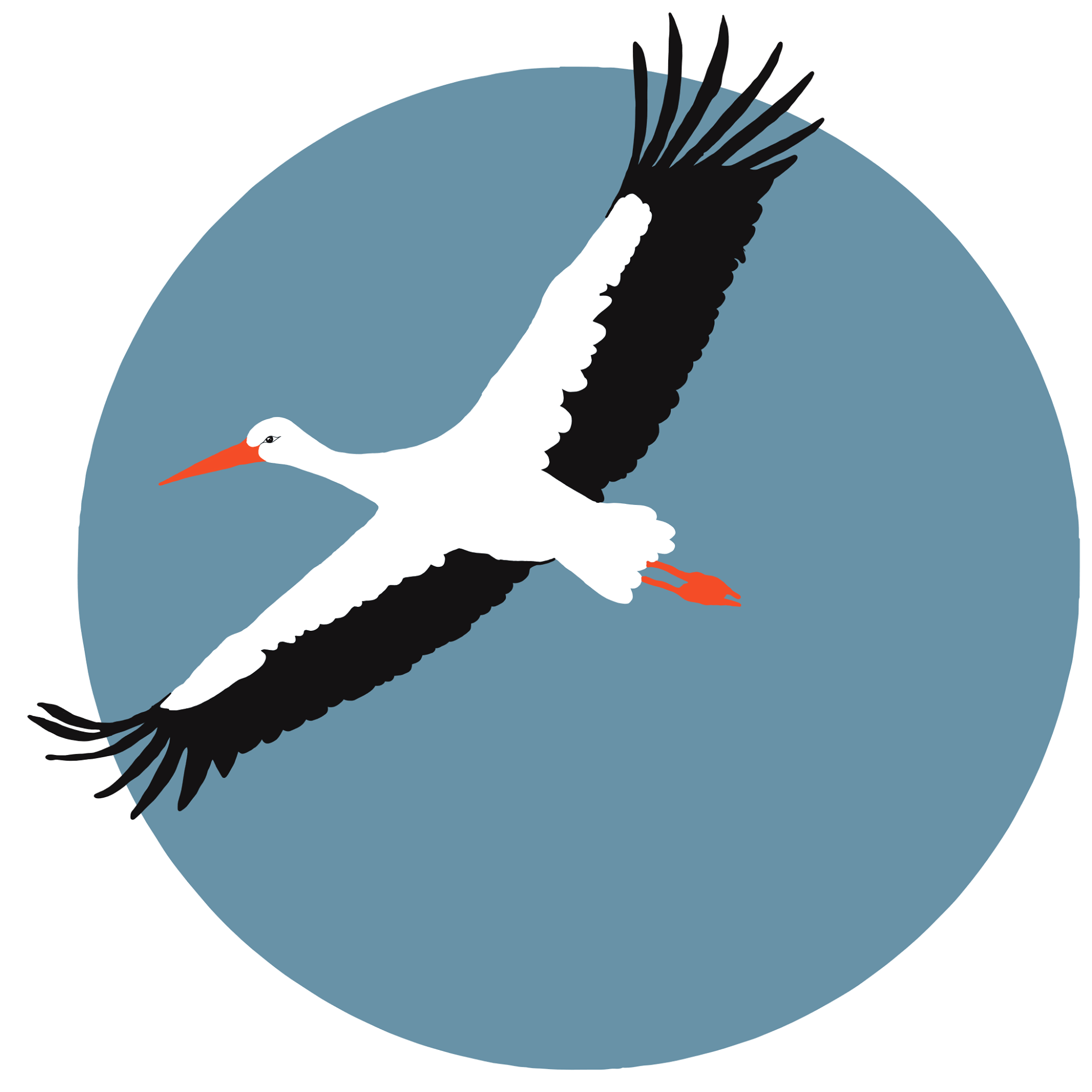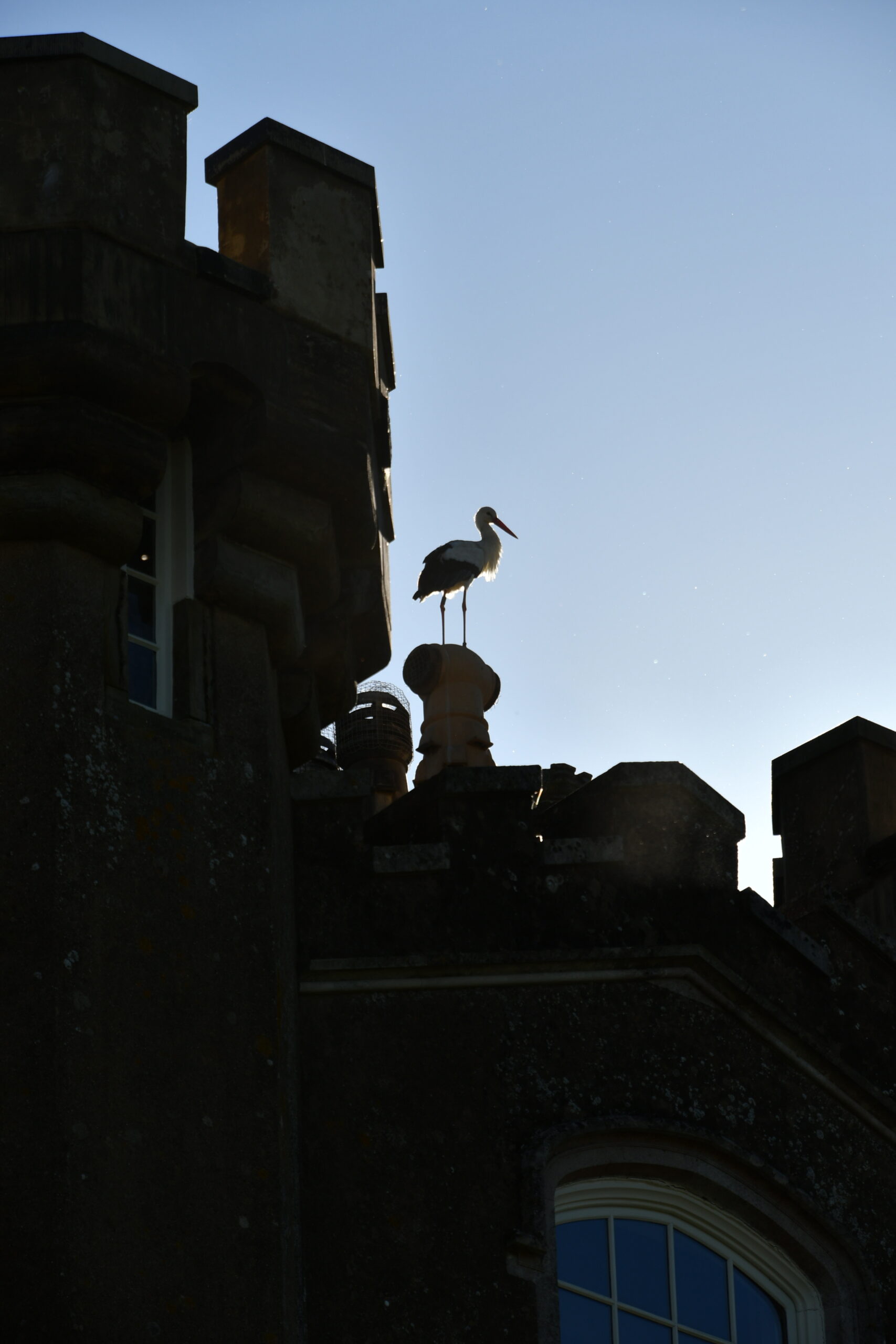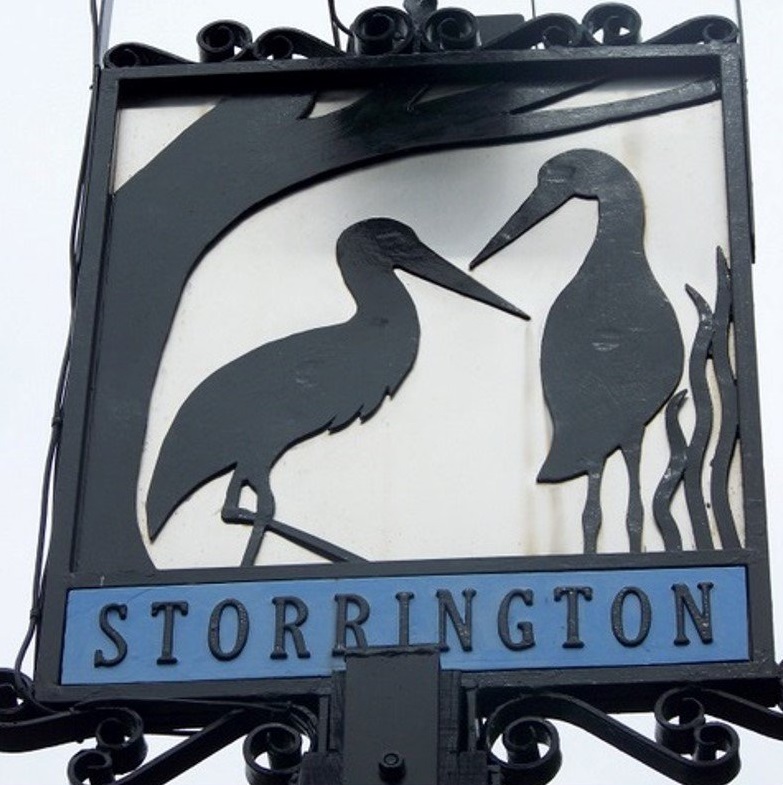Storks In Britain
White storks are native to the British Isles and evidence suggests that they were once widely distributed. Archaeological evidence dates back at least 360,000 years to the Pleistocene. More recently, nesting white storks were recorded on the roof of St Giles Cathedral in Edinburgh in 1416.
Other literature sources suggest that later breeding attempts could have occurred elsewhere (Edgcumbe & Gow 2015). Rare Birds Britain recorded white stork sightings from 1958 until 1983 when the species was considered to be a regular species to the UK and no further sightings were officially recorded. Although there have been regular sightings (20-30 records a year) and suitable habitat, due to their strong natal philopatry they are unlikely to return as a breeding species without intervention.
It is likely that a combination of habitat loss, over-hunting and targeted persecution all contributed to their decline in Britain. A contributory factor may be that storks were persecuted in the English Civil War for being associated with rebellion.
HABITAT
White storks often live in close proximity to people, building their large shaggy nests on roofs and church towers. In Europe, where they are considered a sign of good luck, they are so beloved that people erect cartwheels on their roofs to attract them. Their nests provide opportunities for colonies of other birds such as tree sparrows and house sparrows.
Storks fly far and wide to feed. Omnivores and opportunists, they seek out small mammals, earthworms, snails, crickets, and other large insects in water-meadows, grasslands, and arable fields. We hope that the white stork reintroduction will provide inspiration for restoring wetlands and river catchments such as the Arun and the Adur so that people in towns and villages will regard this bird as a charismatic emblem for the regeneration of nature.
History in a name
Back in the 12th century the town of Storrington in West Sussex, just seven miles from Knepp, was known as ‘Storketon’, or ‘Storcatun’ in old English, meaning ‘homestead with storks’. To this day, the emblem of a pair of storks is featured on the town sign. Traditional pasture and wetlands in the surrounding countryside would have provided storks in Storrington with the perfect feeding environment. Today, the RSPB site of Pulborough Brooks, nearby, preserves some wonderful habitat for wetland birds, and white storks from Knepp are often seen foraging here.
Storks are enshrined in other Sussex place names such as ‘Storwood’, a small farm that once abutted the east end of Oreham Common near Henfield, and ‘Storgelond’ in Wartling, on the edge of the Pevensey Levels.
Wild storks from Europe are often seen prospecting over Sussex. Between 1995 and 2011, 34 white storks were recorded (Birds of Sussex).
Fables and Folklore
Storks feature in the fable ‘The Fox and the Stork’ attributed to the storyteller Aesop in 7th century BCE Ancient Greece. A fox invites a stork over for dinner, which is served on a shallow plate, leaving the stork – with its long beak – unable to eat it. The fox is amused at the trick as the stork goes hungry – until the stork invites the fox over for dinner and gets his own back, serving him soup in a long flask. The moral of the story: treat people as you hope they would treat you. Or at least, don’t play tricks on others unless you can take the same treatment yourself. It’s a tale that reverberates in literature, folklore and art in all corners of Europe down the ages, including a statue of the fox and the stork by Spanish artist Eduard B. Alentorn installed in a fountain in 1890 in Barcelona.
Across Europe, throughout the medieval era, popular folklore told of storks delivering babies. This is probably because storks return from wintering in Africa to nest on village roofs early in spring, seemingly bringing with them the new season. They became synonymous with a time of rebirth and new beginnings. But it’s also likely to have been a handy story to tell young children asking awkward questions.
In Germany, in particular, stories were told about the souls of unborn children residing in caves, marshes and ponds in the form of ‘stork stones’. The storks would bring the children to their expectant parents and either hand them over to the mother or drop them down the chimney. Naughty children would be carried in their beaks, while good children would ride in a basket on their backs. To encourage the storks to bring a baby, children who wanted a baby brother or sister would sing to the storks, or place sweets for them on the windowsill.


